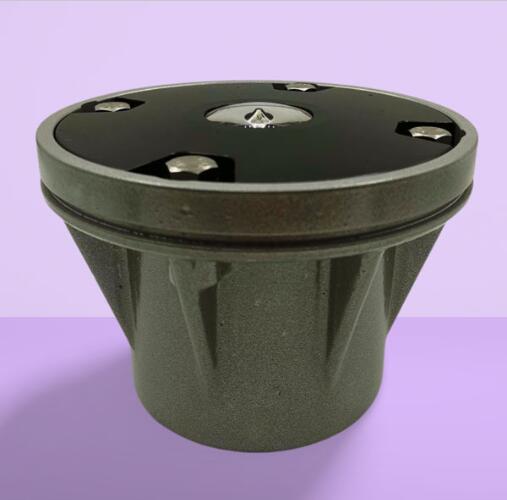Optimizing Safety with Helicopter Landing Pad Lights
In aviation, precision and safety are non-negotiable, especially for helicopter operations. Helicopter landing pad lights are a crucial component, ensuring clear visibility and safe navigation during landings and takeoffs. Designed to meet the highest standards, these lights enhance operational efficiency while prioritizing the safety of pilots, passengers, and ground personnel. This article explores the features, benefits, and applications of helicopter landing pad lights, emphasizing their indispensable role in modern aviation.
The Critical Role of Helicopter Landing Pad Lights
Helicopter landing pad lights serve as visual guides, outlining the boundaries and orientation of landing pads. This is especially vital during night operations or in challenging weather conditions where visibility is compromised. These lights provide clear signals, helping pilots execute safe and precise maneuvers.

Additionally, these lighting systems play a pivotal role in enhancing situational awareness. By demarcating landing zones, they minimize the risk of accidents, such as inadvertent landings outside designated areas or collisions with nearby obstacles. In environments where every second counts, such as emergency medical services, helicopter landing pad lights ensure smooth and efficient operations.
Features of Modern Helicopter Landing Pad Lights
High-Visibility Illumination: Equipped with powerful LEDs, helicopter landing pad lights deliver bright and consistent illumination, ensuring visibility from a distance.
| Helicopter Landing Pad Lights |
| Helicopter Landing Pad Light |
Energy Efficiency: Modern systems are designed for low power consumption without compromising performance, making them eco-friendly and cost-effective.
Durability: Built to withstand extreme weather conditions, these lights are resistant to moisture, heat, and impact, ensuring long-lasting reliability.
Easy Integration: Many systems offer modular designs, allowing for seamless integration with existing infrastructure. Wireless and solar-powered options further simplify installation.
Regulatory Compliance: These lights are manufactured in accordance with international standards, such as those set by the International Civil Aviation Organization (ICAO) and the Federal Aviation Administration (FAA).
Benefits of Helicopter Landing Pad Lights
Enhanced Safety: Clear visual guidance reduces the likelihood of accidents during landings and takeoffs, even in low-visibility conditions.
Operational Efficiency: By facilitating quick and accurate navigation, these lights streamline operations and minimize delays.
Cost Savings: Energy-efficient designs and minimal maintenance requirements translate to lower operational costs over time.
Versatility: These lighting systems are adaptable to various environments, from urban rooftops to remote offshore platforms.
Sustainability: Solar-powered and low-energy models contribute to environmental conservation by reducing the carbon footprint.
Applications of Helicopter Landing Pad Lights
Helicopter landing pad lights are employed across a range of sectors, including:
Emergency Medical Services (EMS): Hospitals rely on these lights to facilitate quick and safe landings during medical emergencies, where every second is critical.
Corporate and Commercial Buildings: Rooftop helipads equipped with proper lighting enhance the convenience and safety of executive travel.
Offshore Operations: Oil rigs and maritime platforms depend on these lights for reliable navigation in remote and challenging conditions.
Military Bases: Helicopter landing pad lights support night missions and rapid deployments, ensuring operational readiness.
Tourism and Resorts: High-end resorts utilize these lighting systems to provide seamless experiences for guests arriving by helicopter.
Innovations in Helicopter Landing Pad Lights
As technology advances, helicopter landing pad lights are becoming more sophisticated. Innovations such as remote-controlled systems, adaptive brightness settings, and integration with navigation technologies are enhancing functionality. Solar-powered models are particularly notable, offering sustainable solutions that reduce dependency on external power sources.
Smart lighting systems that adjust intensity based on environmental conditions are also gaining traction. These features improve energy efficiency while ensuring optimal visibility in real-time. Furthermore, advancements in materials and design are enhancing durability, enabling these lights to perform reliably in extreme conditions.
Choosing the Right Helicopter Landing Pad Lights
When selecting helicopter landing pad lights, several factors should be considered:
Compliance: Ensure the system meets regulatory requirements for aviation safety.
Environmental Suitability: Choose lights designed to withstand local weather and environmental conditions.
Energy Source: Decide between traditional electric-powered systems or sustainable options like solar-powered lights.
Ease of Maintenance: Opt for systems with minimal maintenance needs to reduce long-term costs.
Customization: Look for features that cater to specific operational needs, such as adjustable brightness or wireless control.
Helicopter landing pad lights are an essential element of aviation infrastructure, providing the visibility and guidance necessary for safe and efficient operations. Whether in urban centers, remote locations, or emergency scenarios, these lights ensure that helicopter landings and takeoffs are executed with precision and confidence. As technology continues to advance, the future of helicopter landing pad lights promises even greater innovation, sustainability, and reliability. Investing in high-quality lighting systems is not just a safety measure—it’s a commitment to operational excellence in aviation.
